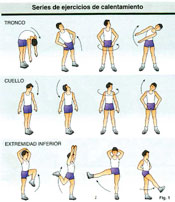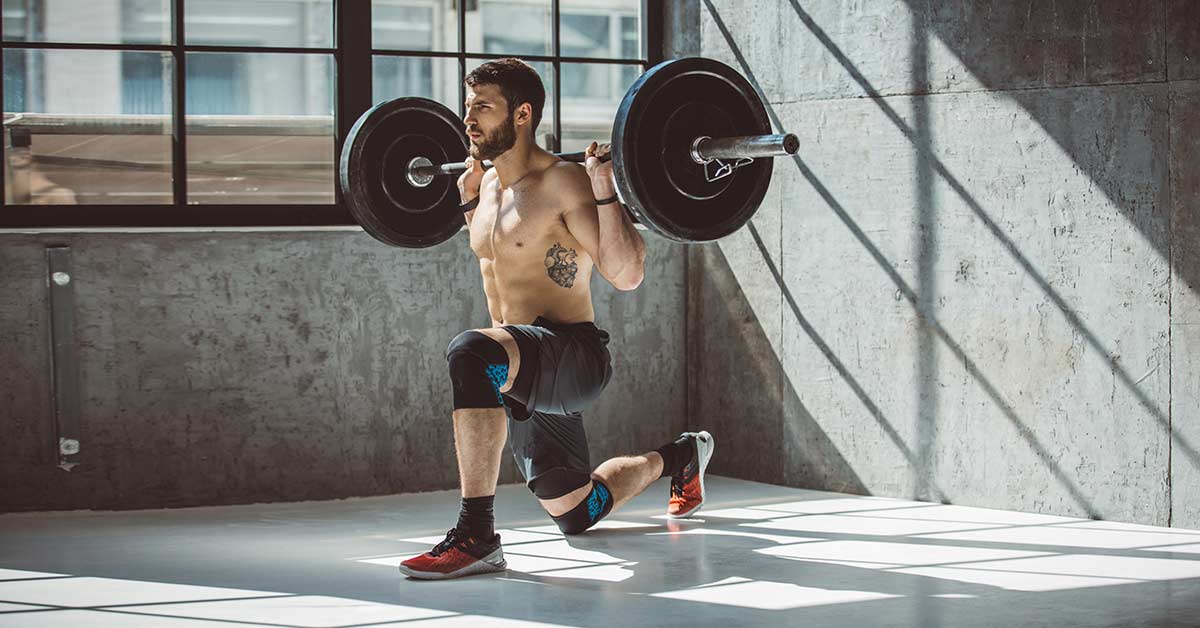Warm up before running (Complete Guide)
For any running addict, performing a good warm-up before running is key to being able to continue adding kilometers avoiding discomfort and injuries, however it is frequently forgotten by both novice and experienced athletes. We are going to break down this issue, explaining why to do it, how to warm up before running and our vision of dynamic stretching before or apart from running.
Why should we warm up before running?
Warming up for athletics is the best way to avoid injuries and discomfort typical of runners such as overloads, patellar tendonitis or plantar fasciitis, which can make life miserable for the most experienced runner. It is important to keep in mind that warming up should be mandatory whether we are going to do general or specific training. However, it must be borne in mind that having a good technique is just as vital to running without injuries, no matter how much you execute your warm-up table before running perfectly, poor technique will very often lead to injuries.
What is general warming?
The definition of the general warm-up is a set of muscle and joint exercises, ordered gradually in order to prepare the body for better physical performance and avoid any type of muscle contraction or physical injury.
The sports warm-up usually consists of a set of exercises that produce an increase in body temperature, especially the exercises that will be affected during sports practice.
What is specific heating?
The specific warm-up is defined as the one that is always done after the general warm-up and consists of exercises focused on the activity that we are going to carry out. The objective is to prepare the body for the preparation of a specific activity and deals with preparing certain parts of the body in a timely manner.
For example, whether we want to warm up before running or warm up to play soccer, we must focus on the technical gesture that we are going to perform, whether it is the run itself or kicking the ball.
access the Fitenium app where you can train dozens of personalized routines totally free
How to execute it: phases of the general warm-up
These exercises for general warm-up must always be carried out no matter what training we do. We shouldn’t take more than 10 minutes to do all the parts of the general warm-up that we propose.
- Gentle jogging as a general activation of the organism, between 3 and 5 minutes.
- General joint mobility warm-up in which we warm up the different body segments. It is usually done in an ascending order (ankles, knees, hips, and shoulders) or vice versa.
- Dynamic displacements with which we mobilize different muscle groups, are key to warming up before running, the most common are lateral running, crossing legs, raising the heels, raising the knees… but there are many.
- Stretching There is a lot of controversy about whether stretching fits into the general warm-up or at another time away from training, but we consider it appropriate to comment on it. It is important not to get into pain or make sudden movements to maximize the benefits and avoid injuries.
How to do it: specific athletics warm-up
There is a warm-up for each discipline that we can practice, although in many cases they are similar. A general soccer warm-up should not be very different from a running warm-up since the base is the lower body in both cases.
Within athletics, there are different types of training that require different general and specific warm-ups. For example, in the event that the training is a running at a constant pace, the general and specific warm-up coincide. It is important not to forget that we are not training yet and to control the intensity of the warm-up.
In the event that we are going to train by intervals or similar, the warm-up exercises before running become different as the demand changes. In this case we are interested in a warm-up in which we are doing short series increasing the intensity to raise the lactate peaks little by little. The upper body also comes into play more than in continuous running, so we must add exercises to warm up before running that involve the upper body from all planes and axes that each joint has.

Finally, if we are going to do speed training, such as 100 or 200 meter dash, we recommend other warm-up exercises for speed. In this case, after the general warm-up we opted for activations and drills with exercises such as knee lifts, heel lifts, skips, cariocas or crossed displacements. Subsequently, to finish the warm-up before running, we will do some series of progressive strides in an interval of 50-100 meters in which we increase the intensity, always below maximum effort.
access the Fitenium app where you can train dozens of personalized routines totally free
How long should the track and field warm-up routine last?
There is an unwritten rule of thumb, the shorter the workout, the longer the warm-up should be. This is because the intensity increases as the distance of the race decreases. For example, in the case of a marathon, you could even warm up as you go in the race, but if you are going to do a short 4 or 5 kilometer race, when you reach your optimal point the race will already be over.
Normally for a 5k race, the warm up goes up to 45 minutes. If it is a distance of 10k, the warm-up exercises to run it usually last half an hour. In the case of a marathon, carrying out a specific resistance warm-up is sufficient and lasts around 10 minutes.
Same warm-up for running a race as for training?
The main difference is that in a race the main variable we play with is the duration of the race, while in training time is less important.
However, in the end, the warm-up exercises for running are the same: jogging, stretching, drills and strides will be present in our warm-up before running, whether for a race or for ordinary training.

Well, I’ve already warmed up and trained, now what?
In the same way that we perform a specific athletics warm-up to prepare our body for an effort, once it is over, it is just as interesting to prepare our body to calm down again. Cooling down is defined as the process after a physical effort and whose objective is to restore resting metabolic and neuromuscular values.
In contrast to the specific athletics warm-up, the cool-down is practically the same no matter what training you have done. The main objectives pursued are:
– Normalize organic functions and homeostatic balance.
– Restore the energetic sustats and overcompensate the organism.
– Restore cellular structural elements and enzymatic systems.
The cooling or cool-down is usually carried out in two phases:
– An initial phase in which the exercise continues but at a lower intensity. In the case of athletics training, you can walk or jog more and more slowly.
– A final phase in which the same warm-up exercises are performed to run static stretching of each muscle group, 2-3 times between 15 and 30 seconds long.
access the Fitenium app where you can train dozens of personalized routines totally free
conclusions
A good warm-up before running is key to progress without discomfort or injury. What’s more, if we skip this part of the training, injuries are practically guaranteed.
Never forget to do your general warm-up and the exercises that make up the specific warm-up for your discipline. The speed-specific warm-up is not the same as a track-and-field warm-up when you do a test, although the running warm-ups are the same, the execution is different.
In the event that we are going to run a test, the distance will determine the duration of the warm-up and, just as important as the warm-up, is the return to calm once we have finished training.





